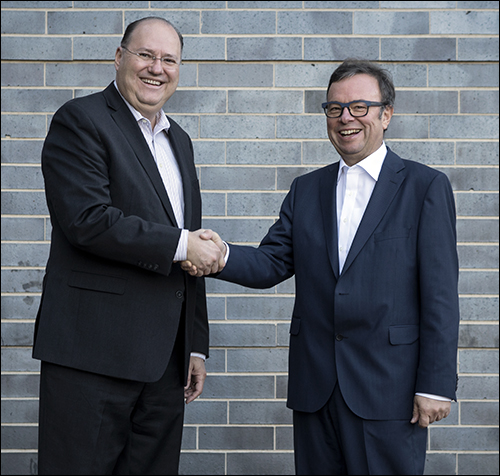Sep 29, 2016Bosch, the $55 billion German manufacturer of sensors used in a wide range of industrial and consumer applications, has been making a big push into the Internet of Things for the past few years. In 2014, it partnered with router makers Cisco Systems and engineering firm ABB to launch Mozaiq Operations, in order to create an open software platform to manage smart-home devices and applications. Last year, Bosch bolstered its software portfolio by acquiring ProSyst, which makes cloud-based middleware and gateway software to manage connected devices used in IoT applications. It has also been leading testbed experiments with the Industrial Internet Consortium (IIC)—an industry group formed in 2014 by AT&T, Cisco, General Electric (GE), IBM and Intel to accelerate the deployment of networked sensor-based technology.
In other words, Bosch has been jockeying for the lead position in the race to embed sensors in everything from cars to machines in manufacturing plants to dishwashers, as well as connect them to pervasive, responsive and smart networks—just like General Electric has.

But on Monday, Bosch and General Electric announced that their respective software divisions, GE Digital and Bosch Software Innovations, have signed a memorandum of understanding aimed at working together, with the mutual goal of growing their respective Industrial IoT businesses. IIoT projects tend to be incredibly broad and complex, requiring the collaboration and cooperation of many technology and service providers—even, sometimes, competitors.
But even Matthew Jennings, Bosch Software Innovations' regional president for the Americas, admitted on Tuesday afternoon, during a meeting with IOT Journal following the first of Bosch's two-day Connected World conference in Chicago, that the collaboration with GE is unique.
"This is new," Jennings said. "It's a non-traditional announcement." But, he added, it will also be mutually beneficial, since it will allow both companies to play to their strengths while also being supported in ways that will ultimately improve project outcomes for the companies' joint customers.
Through the terms of the agreement, GE Digital and Bosch Software Innovations will work with an IoT working group within Eclipse, an open-source software development community, to establish interoperability and platform integration between GE's Predix operating system and Bosch's IoT Suite.
In practical matters, Jennings said, this will make it easier for both GE and Bosch to access each other's cloud-based software, with the goal of making both platforms more useful. For example, Bosch makes network-linked hand tools designed to communicate settings to maintenance or manufacturing workers wirelessly, based on an employee's location inside a plant and the purpose for which he is using a particular tool. But if he is working on a jet engine that GE produced, Bosch would not currenlty have access to, say, the torque specifications for tightening a bolt. By making elements of Predix and Bosch's IoT Suite software interoperable, the companies ensure that all the necessary information would be easily accessible for the user of the connected tool.
On the other hand, Jennings explained, Bosch has a substantial footprint in the automotive industry, in which its customers might use its IoT Suite to manage sensors that communicate using the CAN bus protocol, which Bosch developed. Cloud-to-cloud interoperability will help GE serve customers in the automotive sector, by making it easier for them to access and control sensors communicating via the CAN bus.
The interoperability work between the Predix and Bosch IoT Suite platforms will focus on key functional areas, such as user authentication, messaging and device connectivity. However, each firm will keep its security and other architectural components proprietary.
The need for collaboration across service providers and industries in order to move the Industrial IoT from experimentation to deployment was a common theme during the Connected World event, where Bill Ruh, GE's CEO, and Rainer Kallenbach, Bosch Software Innovations' CEO, announced the collaboration. According to Jennings, the two firms are expressing a genuine interest in working together due to the mutual benefits they anticipate will result. "There is a real openness about going into this together," he said.
